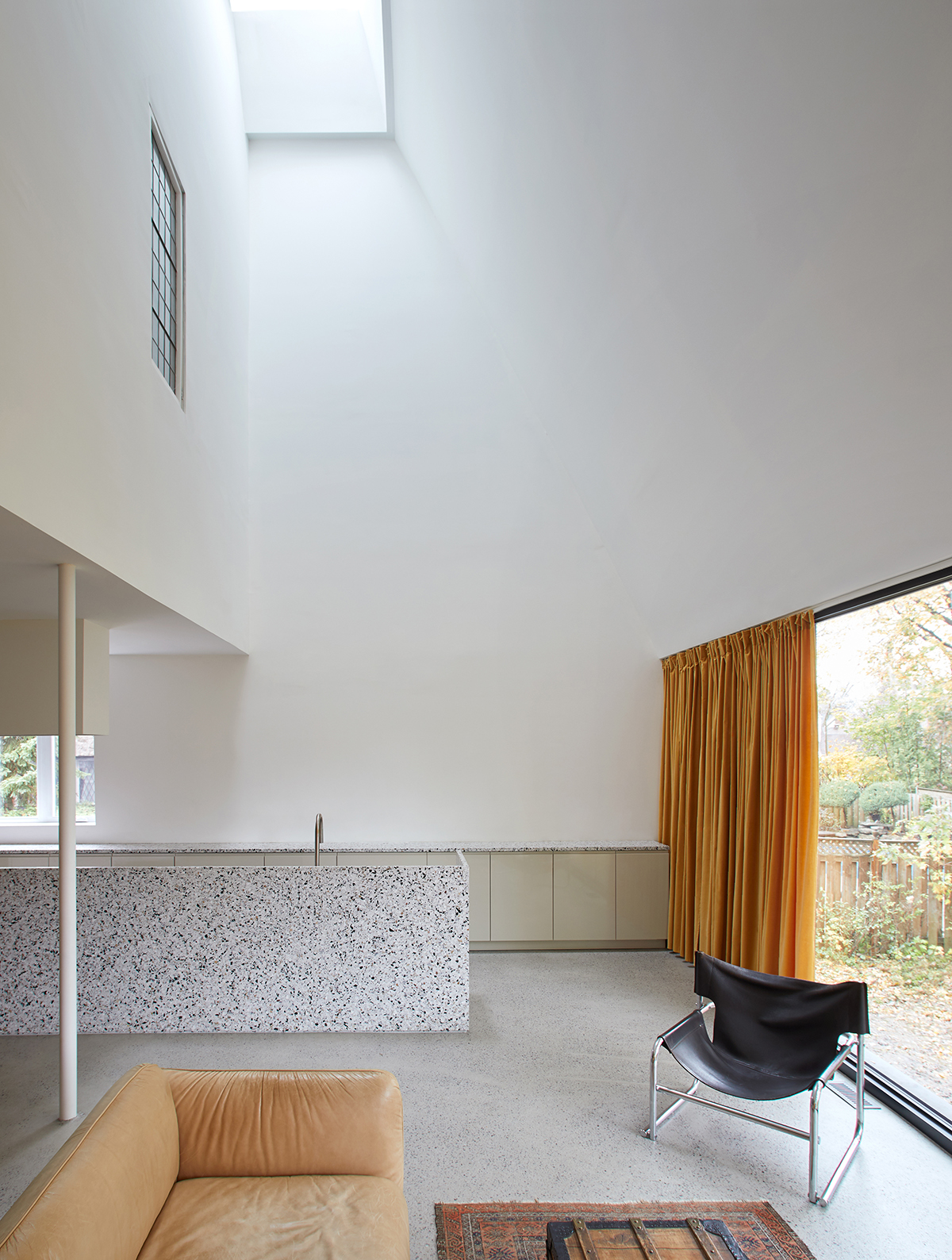At this suburban Montreal home, appearances deceive. Dating from the 1920s, the Tudor-style house presents a prim face to its neighbors, giving no indication as to what lurks behind. Walking past the house along the street, however, one can spot a dark protuberance extending from the gable roof. For such a quaint subdivision, where the homes adopt an eclectic array of architectural styles, the shadowy mass—in fact, a compact addition clad in charred wood siding and topped by a copper-shingled roof—gives off an almost eerie feeling.
Inside the 360-square-foot annex, the mood is light and airy, thanks to the high ceilings and white walls. It has only one designated function, accommodating a kitchen (complete with a monolithic terrazzo island) and dining area. But Antonio Di Bacco, principal at Atelier Barda, the local architecture firm behind the project, suggested it also functions at a rhetorical level. “The backyards of these homes have historically played a secondary role to their front yards and facades,” he explained. “In a sense, our approach…was a critique [of that convention].”

The scheme does away with this outdated spatial dichotomy, even as it preserves the historic charm of the interiors. If the parlor was once the locus of domestic activity, today it is the kitchen. The relocated cooking and eating areas, framed by a large opening overlooking the yard, thus give the once-moribund end of the house “a renewed purpose as a modern, casual space with garden views,” said Di Bacco.
The space is sparse enough to hold gatherings but still manages to be intimate, conducive to family meals and lounging. Mustard-yellow accent curtains are a theatrical touch, in line with the mysterious black exterior.
Header Image: A sleek contemporary kitchen features a monolithic terrazzo island, accent Modernist furnishings, and large exposures. (Maxime Desbiens)
